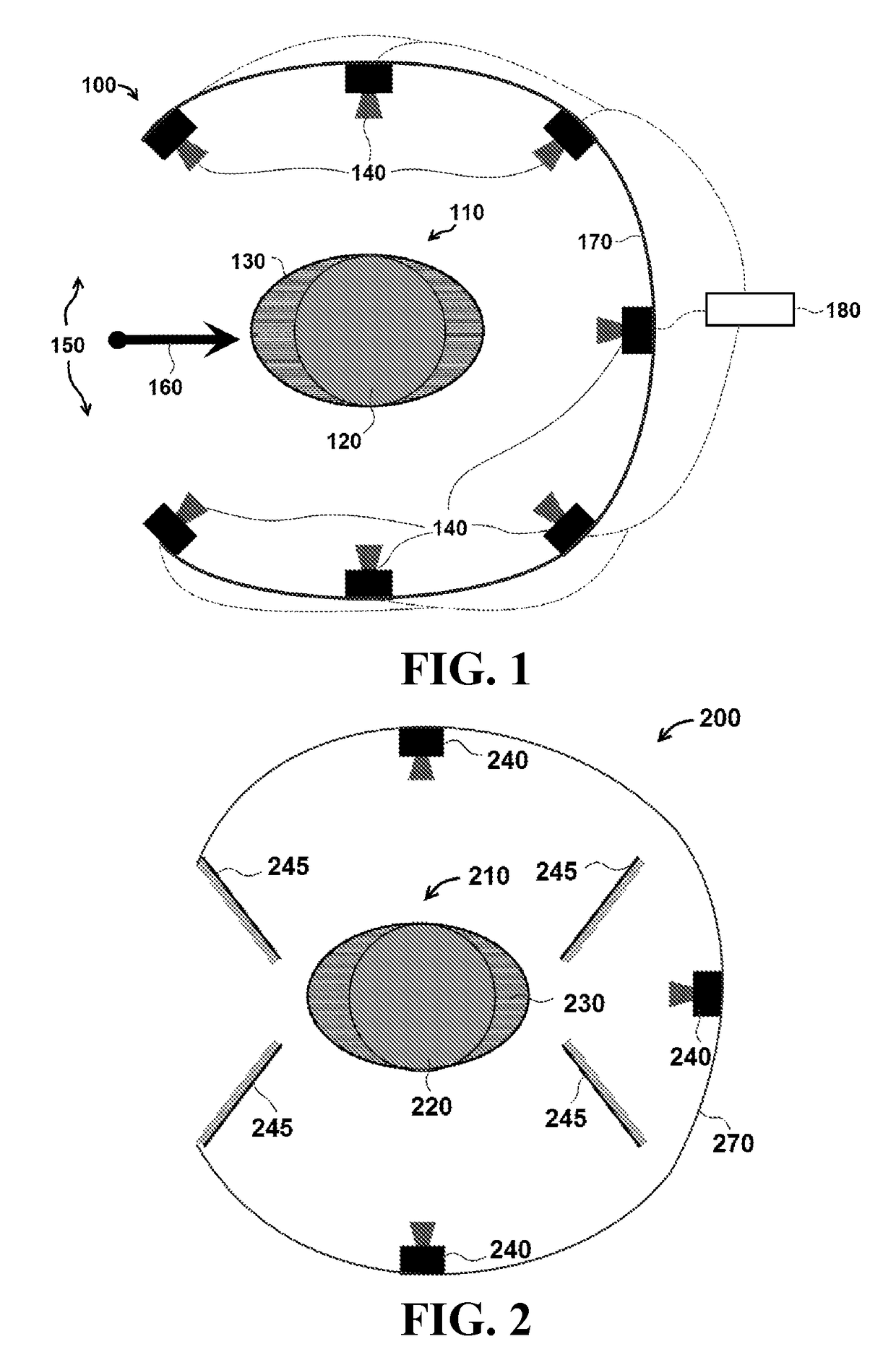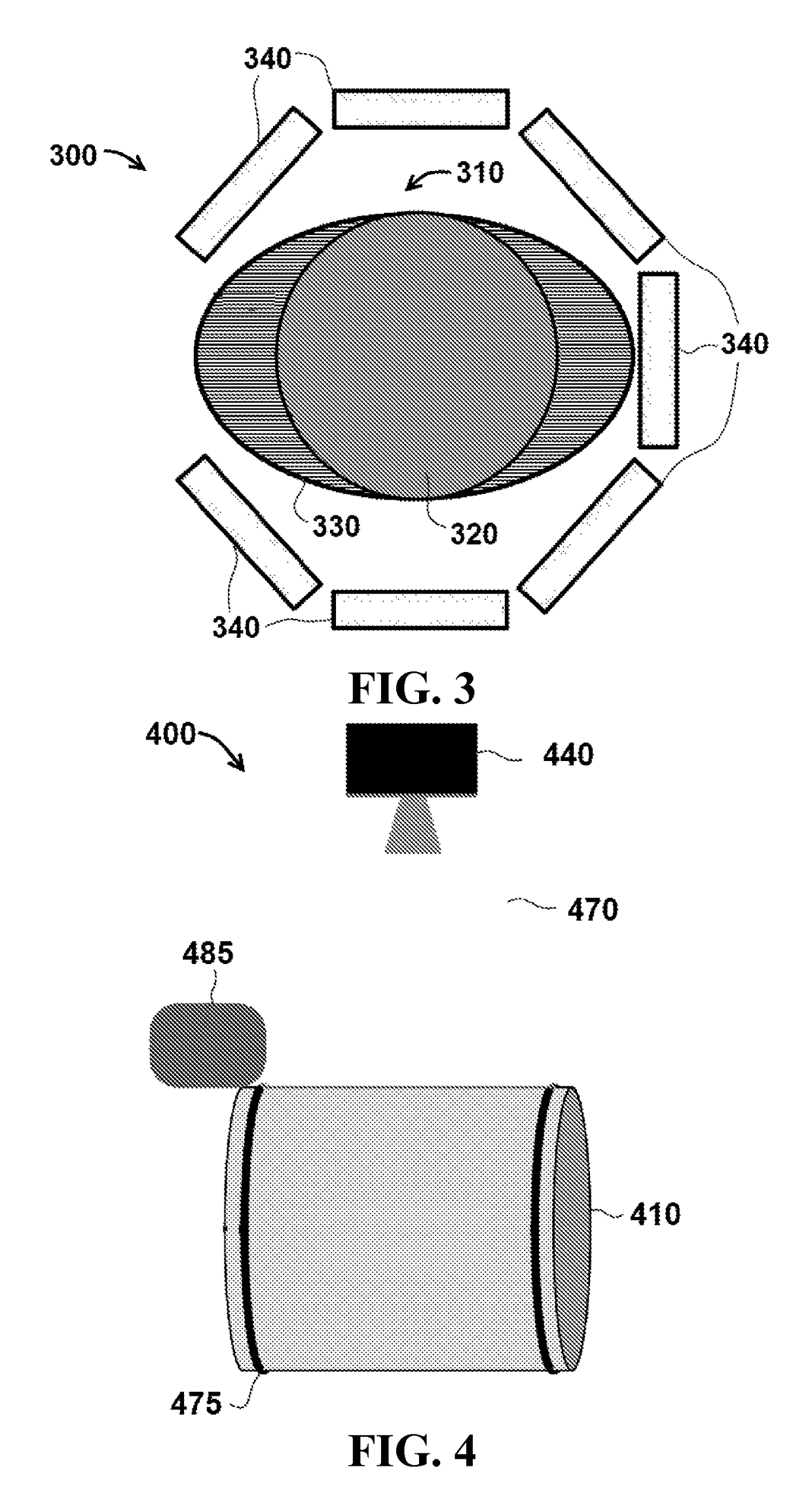Large-volume scintillator detector for rapid real-time 3-D dose imaging of advanced radiation therapy modalities
a scintillator detector and large-volume technology, applied in the direction of luminescent dosimeters, instruments, therapy, etc., can solve the problems of difficult daily clinical use of dosimetric gels, inability to measure the time-dependent aspects of dose delivery, and time-consuming post-processing manipulation and analysis, etc., to facilitate the reconstruction process
- Summary
- Abstract
- Description
- Claims
- Application Information
AI Technical Summary
Benefits of technology
Problems solved by technology
Method used
Image
Examples
Embodiment Construction
[0045]FIG. 1 is a schematic of one exemplary embodiment of a three dimensional (3-D) radiation detector system 100 for measuring radiation dose distributions intended for cancer treatment. A cylindrical plastic scintillator assembly 110 comprises an active element 120 in detector system 100, and in certain embodiments, the dimensions of cylindrical plastic scintillator assembly 110 include a height of approximately 10 to 30 cm and a radius of approximately 5 to 15 cm. In particular embodiments, active element 120 is encased in an elliptic cylinder encasing body 130, which is also called a ‘phantom’ in the terminology of the medical physics community. In specific embodiments, the external dimensions of encasing body 130 are similar in size to a specific part of a human anatomy, including for example, a human head or human torso. In particular embodiments, encasing body 130 can be made of a clear plastic or other clear material with radiation absorption properties similar to those of ...
PUM
 Login to View More
Login to View More Abstract
Description
Claims
Application Information
 Login to View More
Login to View More - R&D
- Intellectual Property
- Life Sciences
- Materials
- Tech Scout
- Unparalleled Data Quality
- Higher Quality Content
- 60% Fewer Hallucinations
Browse by: Latest US Patents, China's latest patents, Technical Efficacy Thesaurus, Application Domain, Technology Topic, Popular Technical Reports.
© 2025 PatSnap. All rights reserved.Legal|Privacy policy|Modern Slavery Act Transparency Statement|Sitemap|About US| Contact US: help@patsnap.com



